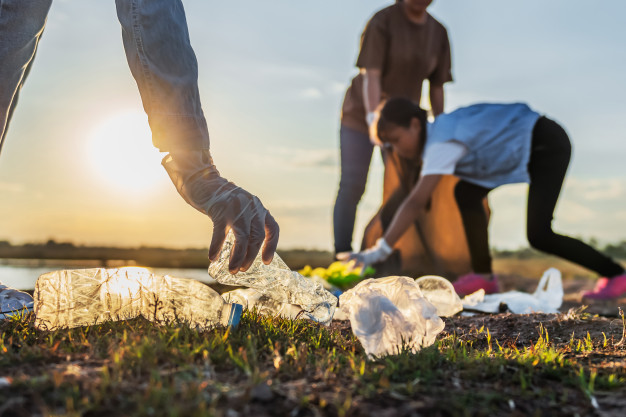How to Teach Recycling to Children
Reduce, reuse, and recycle. These three words are usually the starting point to teaching young children the importance of sustainability. Whether these words are learned in grade school or beyond, the message is always the same: Our planet needs us to recycle.
As adults, we understand the impact recycling has on the planet. For children, the concept may be a bit harder to comprehend. Here are a few steps you can follow to help get younger generations on board with saving the Earth.
Step 1: Explain what recycling is and why it is important.
Recycling is the action and process of taking old trash and turning them into newer materials. This can be a hard concept for a small child to follow. Before you can expect them to help with the process, they must first understand why the process needs to happen. Take some time to sit down and explain to them what an environment is and what it needs to thrive and sustain. There are many books and movies available that can help with this. Some examples are:
“The Adventures of the Aluminum Can” – Little Green Books
“The Adventures of a Plastic Bottle” – Little Green Books
“Lorax” – Dr. Seuss (also a motion picture by the same name)
“FernGully: The Last Rainforest” – motion picture
These books and movies use kid-friendly pictures and dialogue that show the possible impact the lack of recycling could have on our planet, as well as detailing the process materials go through when getting recycled.
Step 2: Talk about what material can be recycled.
Once the concept is understood, the first question a young child may have is, “What can be recycled?” Here is a quick list of things commonly found in your household that anyone can recycle:
Food – Banana peels, eggshells, leftover pizza from the night before. All food scraps can be recycled into compost.
Metals – Aluminum cans, old tins, iron, steel, and copper.
Glass – Bottles and jars.
Cardboard and Paper – Paper products can be recycled into new paper or used for animal bedding.
Plastic – Depending on the number imprinted on the plastic, some plastics can be recycled.
Clothes – Old clothes can be reused in so many ways!
Have your child look around their room to see if they can spot things that are ready to be recycled.
Step 3: Make recycling FUN!
No one likes doing chores, so recycling should not be another boring chore. Gathering recyclable items and sorting them into proper bins can be a fun family activity!
Turn it into a treasure hunt or race. Have incentives for the most collected items. Get creative with Recycling Stations. Make your own compost and garden as a family. Reuse items to make arts and craft project all year long. Volunteer to do a beach cleanup. Talk about what can be recycled while on a road trip or vacation. Most importantly, be proud of the product in the end as well as the entire process. The ideas are endless!
